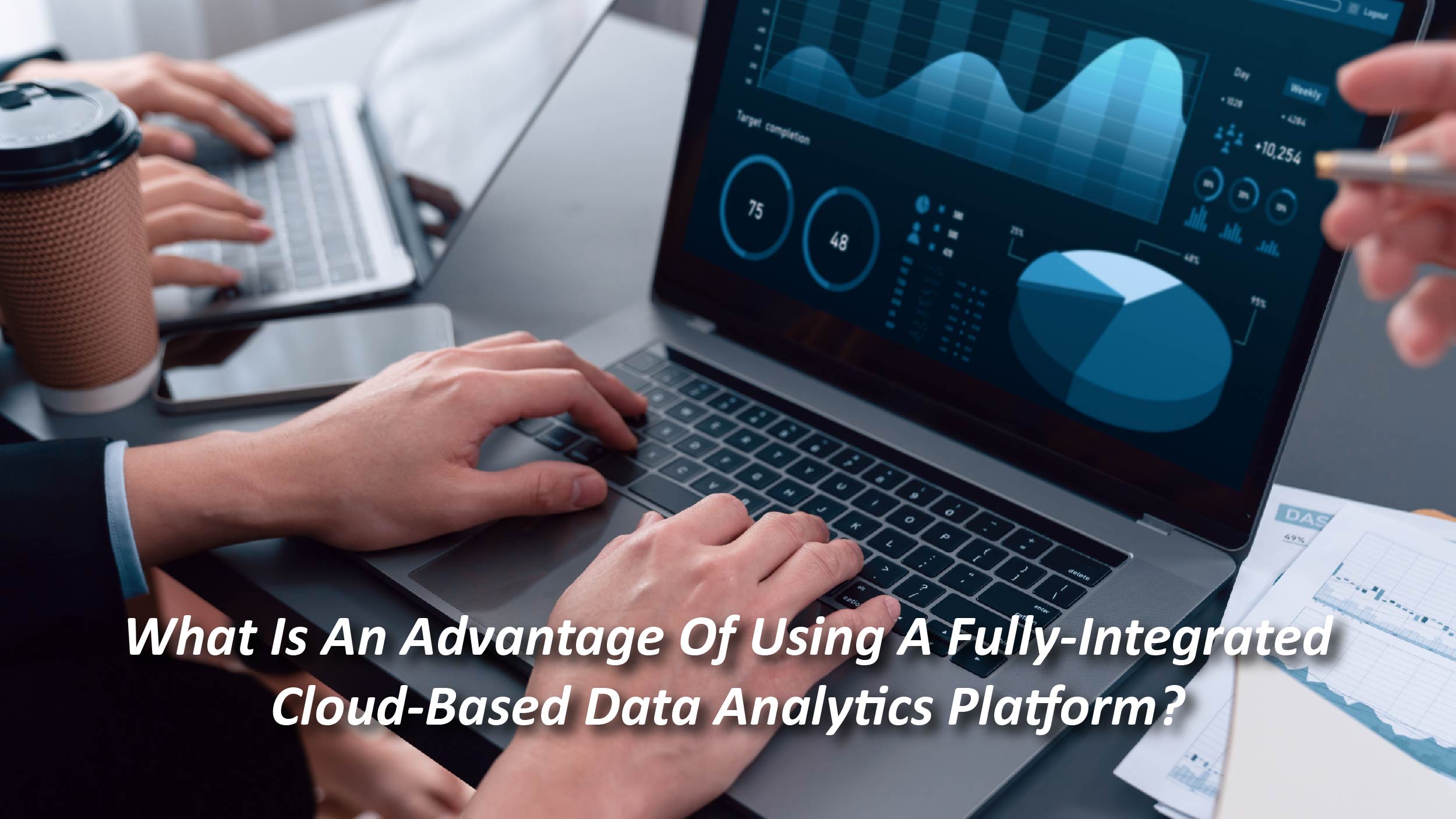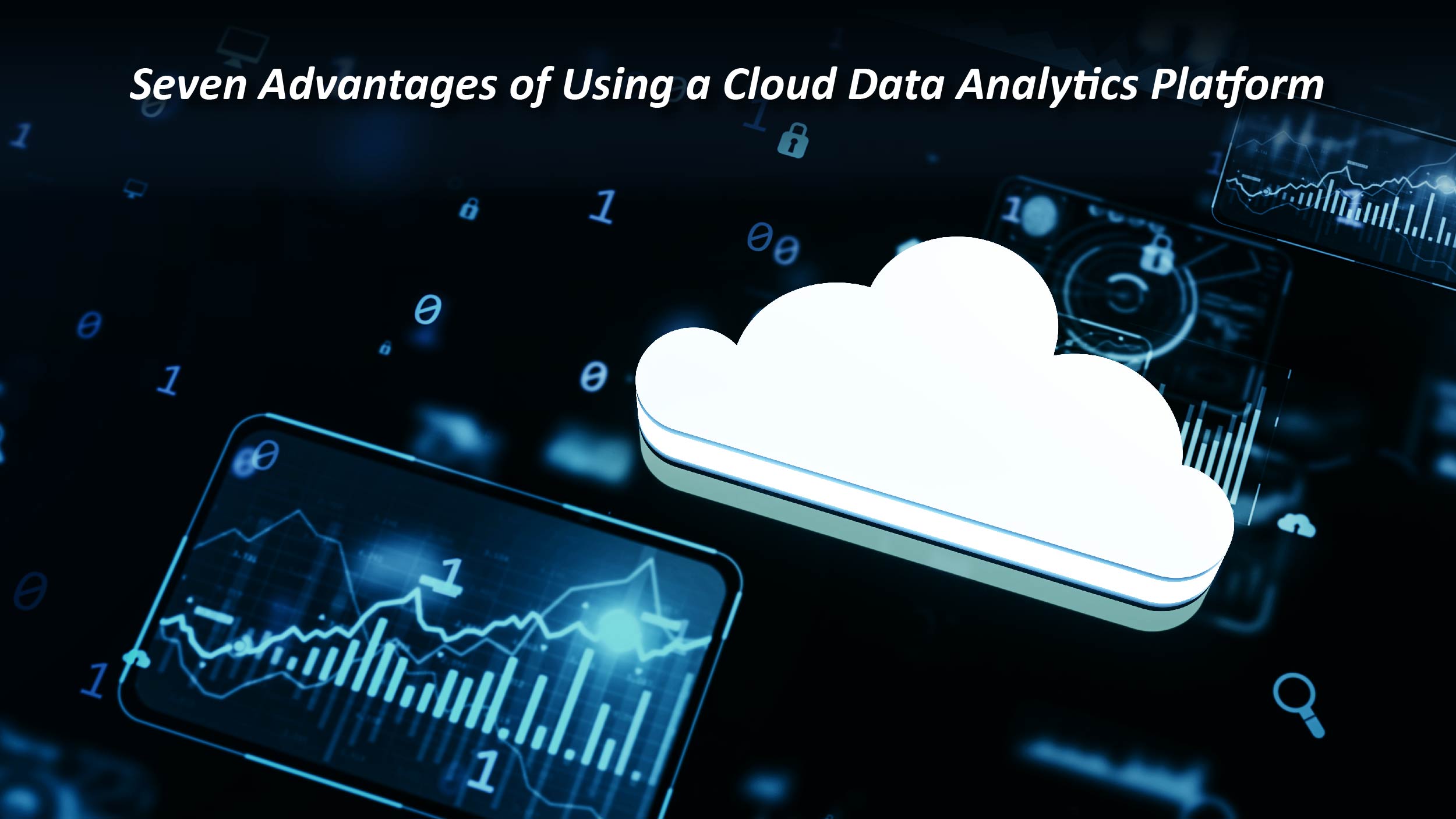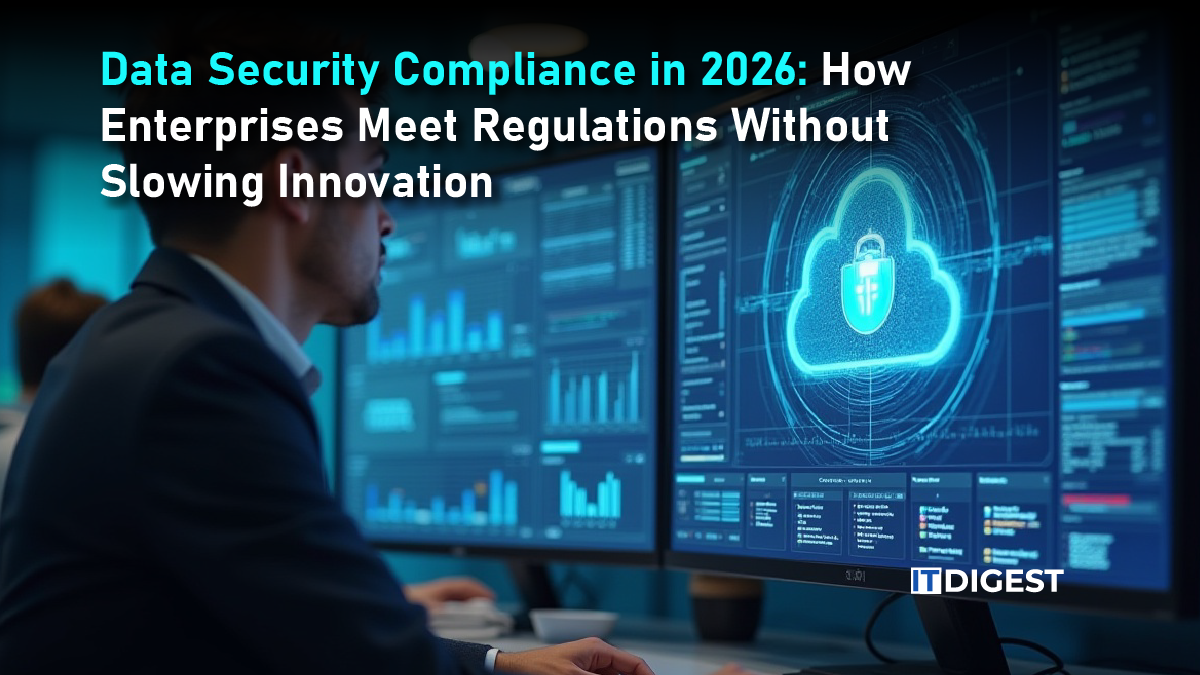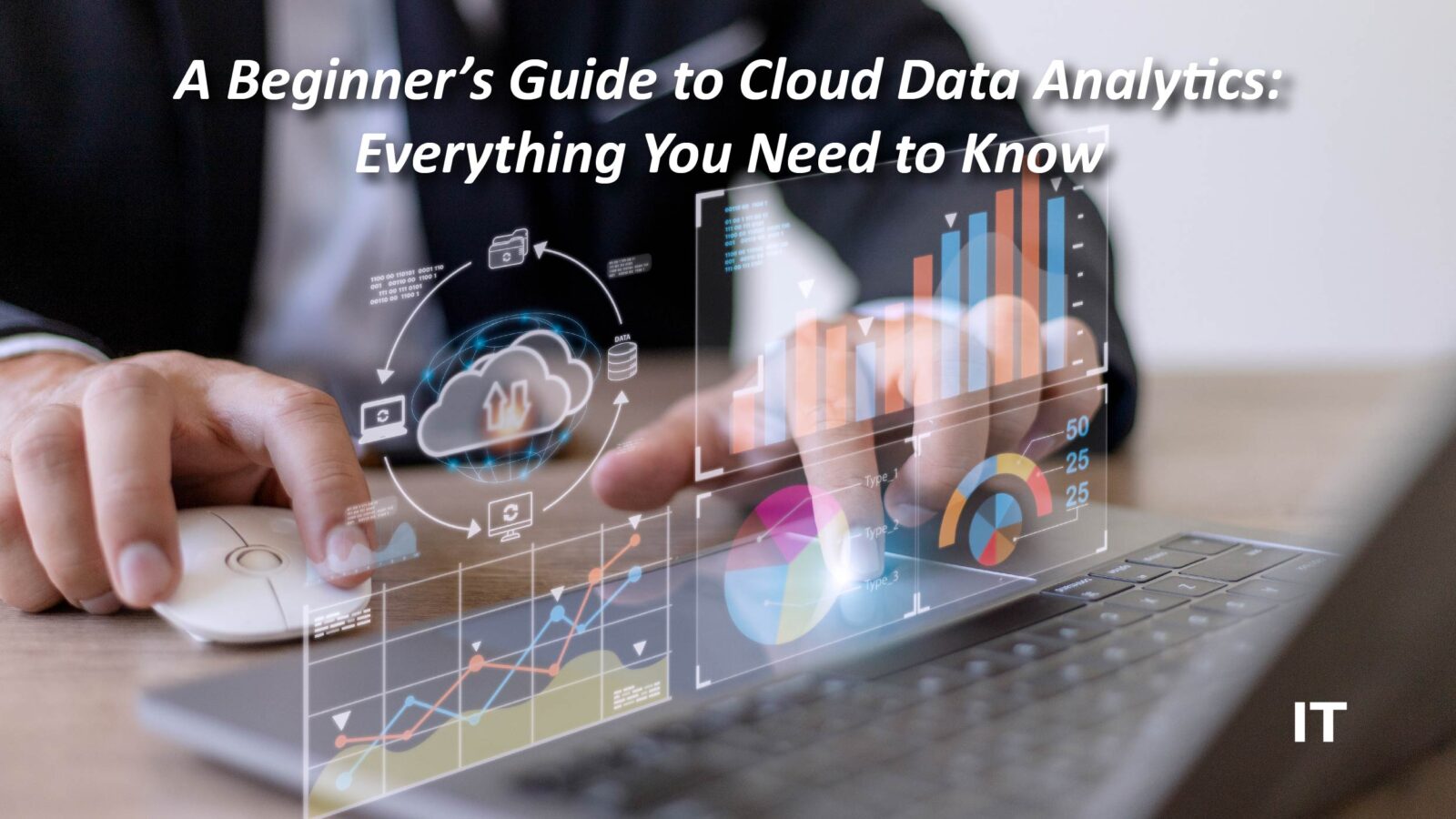Cloud data analytics is everywhere, affecting almost every industry. Whether you run a small flower shop or a big company, you can find cloud services to help you. In a short time, the cloud has become super important for businesses all over the world.
The global cloud data analytics market is expected to accrue a valuation of USD 86.15 billion by 2028. Let’s understand everything about this billion-dollar industry.
What is Cloud Data Analytics?
Cloud data analytics encompasses business intelligence and data analytics processes conducted in the cloud, leveraging cloud technologies and services. Unlike traditional on-premises methods, cloud data analytics involves analyzing and processing data directly in the cloud environment.
Cloud analytics utilizes analytic algorithms to examine data within cloud environments. By combining scalable cloud computing with robust analytics software, it aims to uncover patterns and generate new insights. Over the past couple of years, an increasing number of businesses have turned to cloud-based data analysis.
In many instances, the data under scrutiny is either generated within the cloud or originates from an enterprise’s internal systems before being transmitted to the cloud for analysis. This data can encompass various sources such as video feeds from security cameras, social media activity, log files, and more. As data plays an increasingly pivotal role in contemporary computing, the development of more sophisticated tools for analysis is a natural progression.
Cloud data may also undergo analysis through third-party services, including an enterprise’s proprietary analytics infrastructure or a designated service provider.
Also Read: How Can Data Warehousing Become the Future of Data Storage?
What Is An Advantage Of Using A Fully-Integrated Cloud-Based Data Analytics Platform?
 Cloud-based data analytics platforms offer several advantages over on-premises solutions, making them a preferred choice for many organizations.
Cloud-based data analytics platforms offer several advantages over on-premises solutions, making them a preferred choice for many organizations.
- Cost-Effectiveness: Cloud-based platforms eliminate the need for expensive on-premise hardware and software investments upfront, resulting in significant cost savings. Additionally, maintenance and support costs are often reduced with cloud-based solutions.
- Speed and Agility: Cloud-based data analytics platforms can be deployed quickly and easily, allowing organizations to start using them immediately. They also offer greater agility, enabling users to leverage new features and updates more frequently and faster compared to on-premises solutions.
- Flexible Deployment: Cloud-based platforms provide flexibility in deployment options, allowing users to access and analyze data from anywhere with an internet connection. This flexibility facilitates remote work, collaboration, and easy sharing of insights with others who require access to the data.
- Enhanced Security: Fully-integrated cloud-based data analytics platforms often boast robust cybersecurity functionalities, making them more secure than on-premises solutions. This enhanced security helps organizations avoid local data breaches and ensures the protection of sensitive data.
The advantages of using a fully-integrated cloud-based data analytics platform include cost savings, speed and agility, flexible deployment options, and enhanced security. These benefits make cloud-based solutions an attractive option for organizations looking to leverage data analytics effectively.
Seven Advantages of Using a Cloud Data Analytics Platform
 Cost Savings: Cloud-based data analytics platforms offer cost-effective solutions compared to on-premises alternatives. With no need for upfront investments in hardware or software, businesses can save significantly on expenses. Additionally, maintenance and support costs are often reduced with cloud-based solutions.
Cost Savings: Cloud-based data analytics platforms offer cost-effective solutions compared to on-premises alternatives. With no need for upfront investments in hardware or software, businesses can save significantly on expenses. Additionally, maintenance and support costs are often reduced with cloud-based solutions.- Speed and Agility: Cloud-based data analytics platforms can be deployed quickly and easily, enabling businesses to start utilizing them immediately. Their agility allows for faster adoption of new features and updates compared to on-premises solutions, enhancing operational efficiency.
- Flexible Deployment: Cloud-based data analytics platforms offer flexible deployment options, allowing businesses to choose between on-premises, cloud, or hybrid environments based on their specific needs and preferences.
- Increased Collaboration: Cloud-based data analytics facilitate seamless data access and sharing among team members, promoting collaboration and enabling more effective teamwork.
- Global Access: With cloud-based data analytics, users can access data from anywhere in the world, empowering businesses to make informed decisions regardless of geographical location.
- Improved Customer Insight: Cloud-based data analytics platforms enable businesses to collect and analyze customer data more effectively, leading to valuable insights into customer behavior and preferences.
- Enhanced Decision-Making: Cloud-based data analytics platforms provide powerful tools for faster and more informed decision-making. With access to real-time data and advanced analytics capabilities, businesses can make decisions that drive growth and success.
4 Different Types of Cloud Data Analytics
- Public Cloud Analytics: When organizations require swift action with limited resources, the public cloud offers a cost-effective solution capable of handling large datasets and harnessing cutting-edge technology.
- Private Cloud Analytics: This approach provides organizations with a more tightly controlled and secure environment for data analysis.
- Hybrid Cloud Analytics: Data is stored across both cloud and on-premises systems, facilitating analysis using cloud-based tools.
- Edge Cloud Analytics: In the edge cloud, data is analyzed in real-time upon arrival, rather than at a later stage. This may involve server systems, sensors, handheld devices, or other mobile devices.
Methods of Cloud Data Analysis
Cloud data analysis encompasses various approaches, each tailored to meet specific business needs and preferences. Here are some common methods:
Service Provider Analysis
- In this approach, the analysis and correlation of data are outsourced to a service provider.
- Data may be analyzed directly within the cloud environment or on-premises before being transferred to the cloud.
- The service provider performs data analysis, generates statistical summaries, and delivers insights to the end-user.
- Insights can be provided continuously, in real-time, or at regular intervals based on the user’s requirements.
Off-the-Shelf Analytics
- Off-the-shelf analytics solutions are pre-built and ready-to-use, making them suitable for businesses across various industries.
- These solutions are particularly beneficial for retail, manufacturing, and energy sectors where standard analytics functionalities suffice.
Traditional Cloud Providers
- Traditional cloud providers offer cloud infrastructure and services from their data centers.
- They typically offer both private and public cloud services, catering to diverse organizational needs and preferences.
Final Takeaway
Cloud data analytics offers organizations the ability to analyze and process data in the cloud, providing versatility, cost-effectiveness, scalability, flexibility, security, and integration with AI and machine learning. By leveraging cloud technologies and services, businesses can gain valuable insights, make data-driven decisions, and unlock new opportunities for growth and innovation.































